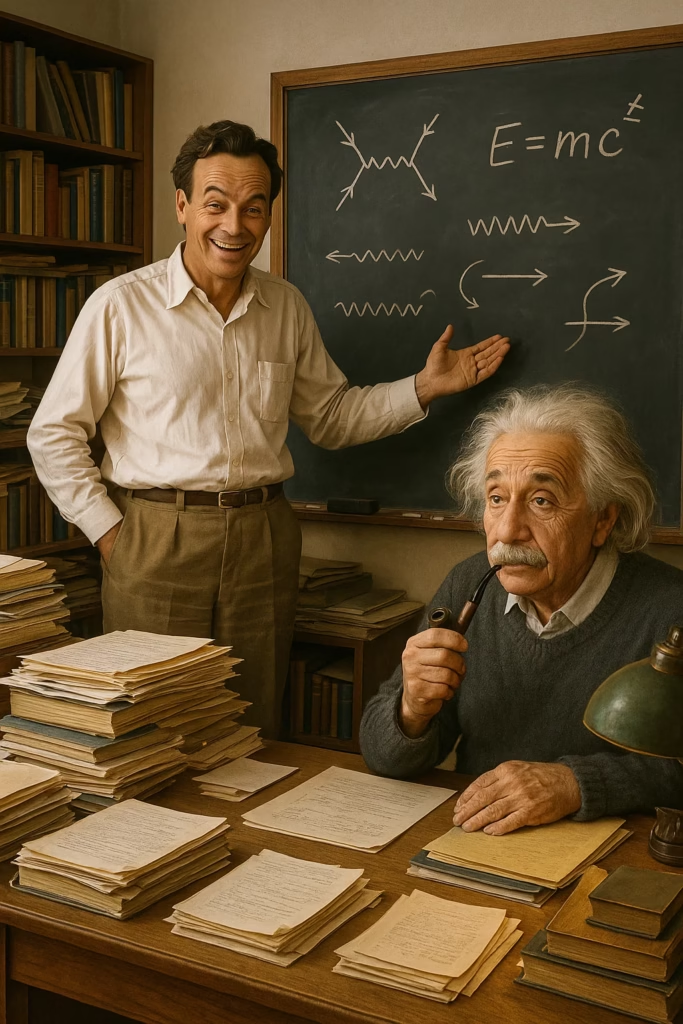🔮 The Speed of Light: When Quantum Mechanics Challenges Relativity
According to Einstein’s special theory of relativity, the speed of light in a vacuum (c) is a finite and insurmountable limit. However, quantum mechanics introduces an extraordinary uncertainty – photons can temporarily exceed this speed! How?
- Heisenberg’s uncertainty principle for momentum and position: Δx⋅Δp≥ℏ/2
- This allows a photon, at very small distances, to have an uncertain momentum – and thus a speed greater than c.
- Feynman describes this as a “wave function arrow” that can point to speeds beyond c.
🌌 Superluminal Motion: The Exotic World of Dispersive Media
In highly dispersive media (e.g., photonic crystals), something incredible happens:
- The group velocity of light (the speed of energy transfer) can exceed c.
- This “superluminal” behavior is a consequence of observing only part of the full quantum process. When the entire probability amplitude is considered, everything fits within the framework of relativity.
- Crucially: Information is not transmitted faster than c. This effect is solely due to wave interference.
🔬 Experiments confirm:
- In crystals with a negative refractive index, light refracts away from the normal – appearing to accelerate beyond c.
- For X-rays in glass: frequency affects speed – high frequencies accelerate, low frequencies decelerate.
⏳ Positrons: Electrons Traveling Backward in Time
Feynman’s deepest idea:
- A positron (anti-electron) is actually an electron moving backward in time.
- In Feynman diagrams:
- A line going backward in time = a positron moving forward.
- This automatically explains annihilation: an electron “turns” into the past and becomes a positron.
🧠 Why is this not science fiction?
- Mathematical equivalence: This interpretation is fully equivalent to standard quantum field theory.
- CPT theorem: Nature is symmetric if we swap particles → anti-particles (C), space → mirror (P), and time → backward (T).
- Economy of concepts: Instead of two types of particles (e⁻ and e⁺), we have one (e⁻) that changes its direction of motion through time.
🚫 Why does this not violate causality?
Although it seems information could be sent to the past, quantum mechanics prevents this:
- All paths violating causality cancel each other out (interference).
- Only paths respecting causality contribute to the final result.
- This is proven in experiments with quantum teleportation – information is not transmitted instantaneously.
🔭 Significance: What does this reveal about reality?
- Time is not absolute – it can “bend” at quantum scales.
- Anti-matter is “matter in inverted time” – explaining its rarity in the Universe.
- Quantum mechanics and relativity are not in conflict – they complement each other at the deepest level.
🌠 What’s next? Quantum Entanglement and “Spooky Action at a Distance”
In the next post:
- How can photons remain entangled regardless of their mutual distance?
- Why did Einstein call this “spooky action at a distance”?
- How does this change our definition of locality and causality?
Stay with us – we are diving deeper into the mysteries of the quantum world!


Leave a Reply